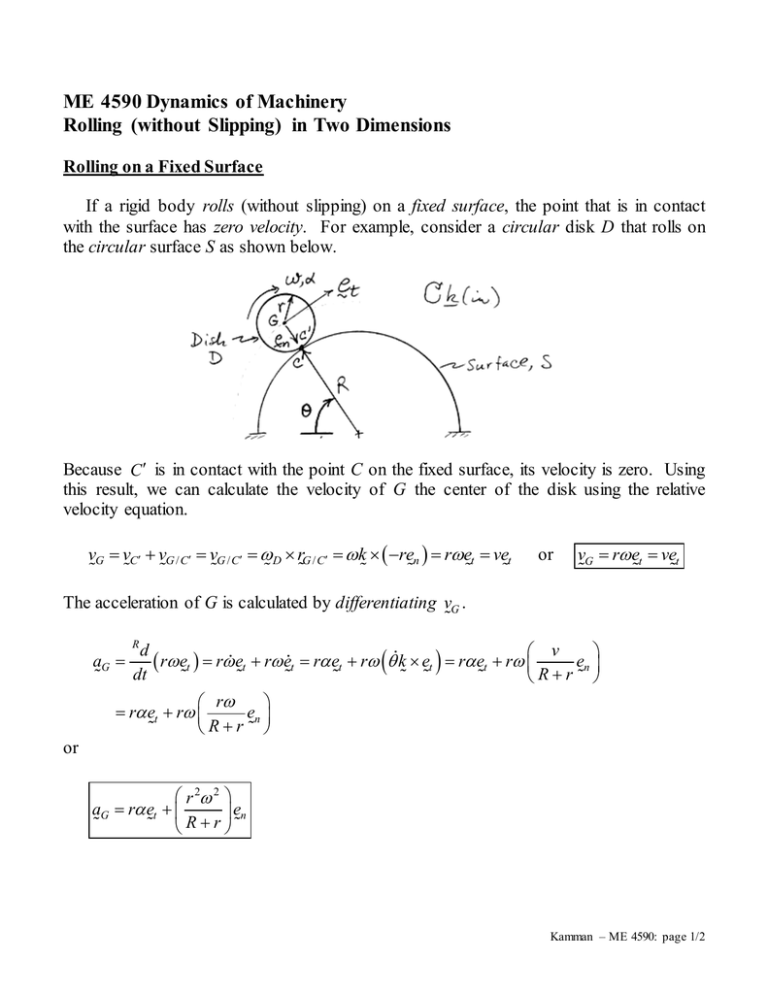ME 4590 Dynamics of Machinery
advertisement

ME 4590 Dynamics of Machinery Rolling (without Slipping) in Two Dimensions Rolling on a Fixed Surface If a rigid body rolls (without slipping) on a fixed surface, the point that is in contact with the surface has zero velocity. For example, consider a circular disk D that rolls on the circular surface S as shown below. Because C is in contact with the point C on the fixed surface, its velocity is zero. Using this result, we can calculate the velocity of G the center of the disk using the relative velocity equation. vG vC vG / C vG / C D rG / C k ren ret vet or vG r et vet The acceleration of G is calculated by differentiating vG . aG d v en r et r et r et r et r k et r et r dt Rr R r r et r en Rr or r 2 2 aG r et en R r Kamman – ME 4590: page 1/2 Rolling on a Moving Surface If a rigid body rolls (without slipping) on a moving surface, then the velocities of the two contact points, C and C , must be the same (i.e. vC vC ) . For example, consider a circular disk D that rolls on the rotating circular surface S as shown in the figure at the right. As before, we can calculate the velocity of the mass center G using the relative velocity equation. vG vC vG / C S r C / O D r G / C k Ren k ren R r et or vG R r et vet Again, the acceleration of G is found by differentiating the velocity vector. aG R d R r et R r et R r et dt v R r et R r k et R r et R r en Rr or R r 2 en aG R r et R r Note: Even though the velocities of the contact points C and C' are equal (i.e. vC vC ), the accelerations of these points are not equal (i.e. aC aC ). However, in two dimensions, it can be shown that the components of these accelerations along the tangent direction et are equal (i.e. aC et aC et ). Kamman – ME 4590: page 2/2

